Related Research Articles

Octave Chanute was a French-American civil engineer and aviation pioneer. He provided many budding enthusiasts, including the Wright brothers, with help and advice, and helped to publicize their flying experiments. At his death he was hailed as the father of aviation and the initial concepts of the heavier-than-air flying machine.
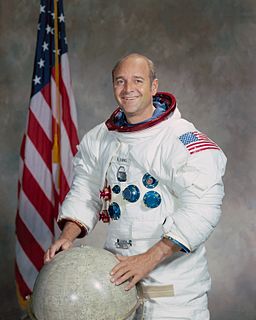
Capt. Ronald Ellwin Evans Jr., USN was an American naval officer and aviator, electrical engineer, aeronautical engineer, and NASA astronaut. As command module pilot on Apollo 17 he was one of the 24 astronauts to have flown to the Moon, and one of 12 people to have flown to the Moon without landing on it.
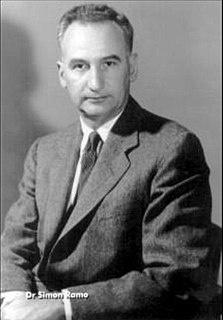
Simon "Si" Ramo was an American engineer, businessman, and author. He led development of microwave and missile technology and is sometimes known as the father of the intercontinental ballistic missile (ICBM). He also developed General Electric's electron microscope. He played prominent roles in the formation of two Fortune 500 companies, Ramo-Wooldridge and Bunker-Ramo.
John Nelson Warfield was an American systems scientist, who was professor and director of the Institute for Advanced Study in the Integrative Sciences (IASIS) at George Mason University, and president of the Systems, Man, and Cybernetics Society.

Nathan Mortimore Newmark was an American structural engineer and academic, who is widely considered one of the founding fathers of earthquake engineering. He was awarded the National Medal of Science for engineering.

John Roy Whinnery was an American electrical engineer and educator who worked in the fields of microwave theory and laser experimentation.
Petar V. Kokotovic is professor emeritus in the College of Engineering at the University of California, Santa Barbara, USA. He has made contributions in the areas of adaptive control, singular perturbation techniques, and nonlinear control especially the backstepping stabilization method.
Dr. Lawrence Jerome Fogel was a pioneer in evolutionary computation and human factors analysis. He is known as the inventor of active noise cancellation and the father of evolutionary programming. His scientific career spanned nearly six decades and included electrical engineering, aerospace engineering, communication theory, human factors research, information processing, cybernetics, biotechnology, artificial intelligence, and computer science.
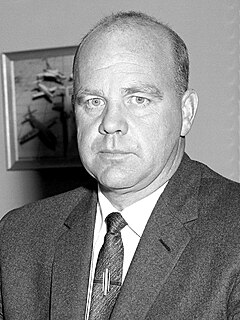
Paul F. Bikle was director of the U.S. National Aeronautics and Space Administration (NASA) Dryden Flight Research Facility from 1959 until 1971, and author of more than 40 technical publications. He was associated with major aeronautical research programs including the hypersonic X-15 rocket plane, and was a world record-setting glider pilot.

The Wright Brothers Medal was conceived of in 1924 by the Dayton Section of the Society of Automotive Engineers, and the SAE established it in 1927 to recognize individuals who have made notable contributions in the engineering, design, development, or operation of air and space vehicles. The award is based on contributed research papers.
Bruce Russell Ellingwood is an American civil engineer and a Professor of Civil and Environmental Engineering at the Colorado State University.
Michael John Wendl is an engineer who worked at the McDonnell-Douglas Corporation, mainly in the area of aerospace control. He is noted primarily as one of the early developers of terrain following technology and a proponent of incorporating energy management theory into the design of fighter aircraft. He won the Wright Brothers Medal in 1974 with Ralph Pruitt, Gordon G. Grose, and J. L. Porter for a paper discussing future aircraft designs that integrate fly-by-wire controls with engine inlets/nozzles and advanced pilot displays.
Gordon Glen Grose was an engineer at the McDonnell-Douglas Corporation. He won the Wright Brothers Medal in 1974 with Michael J. Wendl, J. L. Porter, and Ralph Pruitt for a paper discussing future aircraft designs that integrate fly-by-wire controls with engine inlets/nozzles and advanced pilot displays.
V. Ralph Pruitt was an engineer at McDonnell Douglas who won the Wright Brothers Medal in 1974 with Michael J. Wendl, Gordon G. Grose, and J. L. Porter for a paper discussing future aircraft designs that integrate fly-by-wire controls with engine inlets/nozzles and advanced pilot displays.
Dwight Henry Bennett was an aeronautical engineer and one of the early developers of the control configured vehicle (CCV) concept. He won the Wright Brothers Medal in 1972 with R. P. Johannes for the paper Combat Capabilities and Versatility Through CCV, discussing its applications.
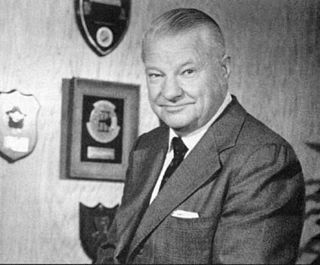
Clarence Leonard "Kelly" Johnson was an American aeronautical and systems engineer. He is recognized for his contributions to a series of important aircraft designs, most notably the Lockheed U-2 and SR-71 Blackbird. Besides the first production aircraft to exceed Mach 3, he also produced the first fighter capable of Mach 2, the United States' first operational jet fighter, as well as the first fighter to exceed 400 mph, and many other contributions to various aircraft. As a member and first team leader of the Lockheed Skunk Works, Johnson worked for more than four decades and is said to have been an "organizing genius". He played a leading role in the design of over forty aircraft, including several honored with the prestigious Collier Trophy, acquiring a reputation as one of the most talented and prolific aircraft design engineers in the history of aviation. In 2003, as part of its commemoration of the 100th anniversary of the Wright Brothers' flight, Aviation Week & Space Technology ranked Johnson eighth on its list of the top 100 "most important, most interesting, and most influential people" in the first century of aerospace. Hall Hibbard, Johnson's Lockheed boss, referring to Johnson's Swedish ancestry, once remarked to Ben Rich: "That damned Swede can actually see air."
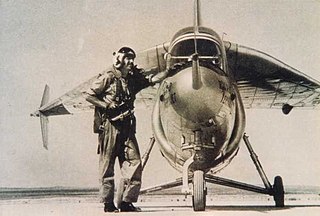
Peter Frank "Pete" Girard was a United States Army Air Forces pilot, Chief Engineering Test Pilot for Ryan Aeronautical, and the first man to hover in jet vertical flight. This feat was accomplished November 24, 1953 during tests that would culminate in the development of the Ryan X-13 Vertijet. He would later accomplish the first full-cycle vertical takeoff, horizontal flight, and vertical landing in a jet aircraft on April 11, 1957 at Edwards Air Force Base. Prior to working with Ryan, Girard had worked at Curtiss-Wright in St. Louis, Missouri and served in the United States Army Air Corps during World War II as a Consolidated B-24 Liberator pilot.
Robert H. Park was an American electrical engineer and inventor, best known for the Park's transformation, used for simplifying the analysis of three-phase electric circuits. His related 1929 concept paper ranked second, when looking at the impact of all twentieth century power engineering papers. Park was an IEEE Fellow and a member of the National Academy of Engineering.

Professor Bhagavatula Dattaguru is an Indian engineer and academic. He has received several awards, including the Padma Shri Award, India's fourth highest civilian honour in 2005 in the field of science and engineering.
References
- 1 2 Holloway, R.B., Burris, P.M. and Johannes, R.P. (1970) Aircraft Performance Benefits from Modern Control Systems Technology, Journal of Aircraft Archived June 22, 2008, at the Wayback Machine 7(6), 550–553.
- ↑ Bennett, D.H. and Johannes, R.P. (1972) Combat Capabilities and Versatility Through CCV, Society of Automotive Engineers paper number 720854.
- 1 2 3 Gregory, J. (1980) Who's Who in Engineering, 4th ed., American Association of Engineering Societies.
- ↑ http://qctimes.com/news/local/obituaries/robert-johannes/article_4b3824fe-93d5-5435-8852-73889ac2c154.html [ bare URL ]